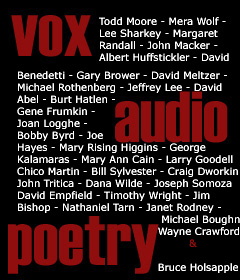
Anthony Braxton
Composition No 94 for Three Instrumentalists (1980)
(Golden Years of New Jazz: GY3)
Anthony Braxton: reeds
Ray Anderson: trombones, cornet, trumpet
James Emery: guitars, electronics
This is one of the four debut releases of Leo’s new offshoot, “Golden Years of New Jazz”, a somewhat ironically-titled label whose intention is to remind us that free jazz has been around for a rather long time, that it’s a well-established genre with famous figures, classic recordings and, yes, “golden years”.
Whether 1980 was a golden year for free jazz is a moot point, but what’s on this disc isn’t free jazz anyway. It’s a pair of performances of a semi-determinate score by Braxton which encourages musicians to improvise within a fairly flexible set of parameters. The pages of the score basically indicate densities and melodic materials of various sorts and leaves the performers to fill in the details.
Graham Lock’s hugely informative notes describe this music as “a magic carpet, a warp and woof of shape and symbol”. There is certainly a sense of individual musical entities being deployed here, moving in three layers, sometimes together, sometimes not. The score seems to emphasise this, with each part made up of discrete little shapes, lines and groups of notes which seem not to be closely connected together.
These highly detailed ensemble sections are heavily interspersed with duets and occasional solos. The overall effect is one found in many classical pieces of the 1980s; shifting veils of sound, sometimes dense, sometimes sparse, consisting of elements which seem to have their own inner logic. The decision to break up the trio in this way, whatever its structural reasoning — and with Braxton, we can be sure that was there somewhere — also makes this disc a lot more approachable than it might have been otherwise, being two unbroken performances of nearly forty minutes each.

Anthony Braxton | Photo: Gérard Rouy
The fact that the second performance plays the same pages of the score used in the first, but in reverse, shouldn’t lead one to believe that this palindromic structure can really be detected. For example, the first performance ends with an extended trio section followed by a duet of Anderson and Emery; the second begins with a short trio section followed by an extended trombone solo. These are in fact two quite different realisations of a score designed for improvisors, and the improvisatory element is obviously very strong indeed.
Braxton’s collaborators on this performance are, therefore, of great importance in ensuring its success. They certainly pull it off, with Anderson’s virtuosic trombone and Enery’s scribbly but always interesting guitar playing; both have a lot of tricks up their sleeves which they can bring to this ever-changing music, too. Emery’s electronics are, oddly, sometimes very sophisticated and sometimes of the ray-gun-noise variety, but both sorts work fine in context.
This is a compulsory purchase of Braxton fanatics, of course, but what makes it stand out is that, yet again, it appears the Professor has created something which is quite unlike anything else in the catalogue (at least as far as this writer knows). It owes a strong debt to classical approaches, but is resolutely improvised without ever getting very close to jazz. The dynamism of this music, its interest in real-time elaboration and development of structural ideas, is impressive to say the least. Those who still doubt the importance of Braxton as a composer are strongly encouraged to hear it. Richard Cochrane



Leave a Reply